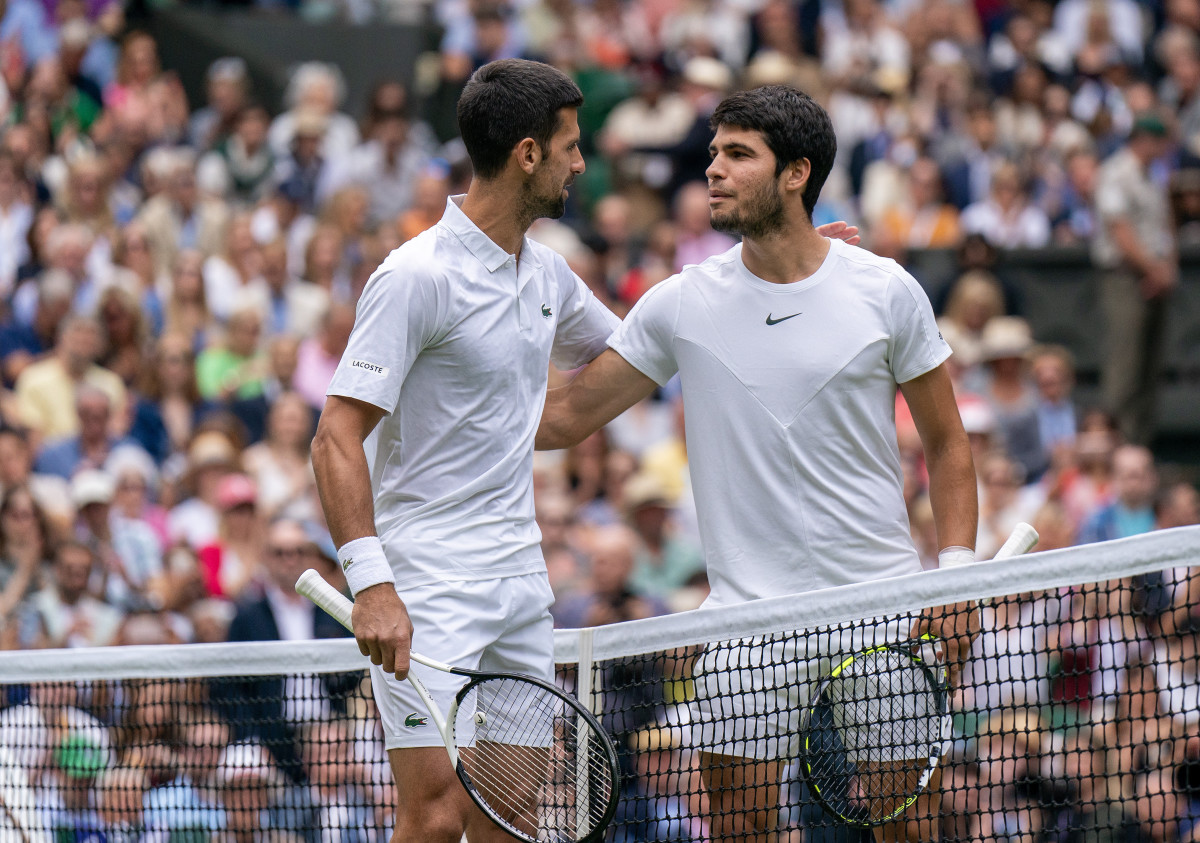With Carlos Alcaraz’s Wimbledon Win, Into the Tennis Future We Go
Sometimes stardom come through side doors and service entrances. But Sunday at Wimbledon centre court, Carlos Alcaraz achieved it by going through the front door— smashing it down, in fact. In a spellbinding insta-classic, he beat Novak Djokovic in the Wimbledon final 1–6, 7-6(6), 6–1, 3–6, 6–4.
Alcaraz gave a full expression of his vast battery of skills. If this match lived up to its billing though, it certainly didn’t play out as anyone expected. This was not so much a tennis match as a five-act melodrama.

When the two faced each other in the French Open semifinals barely five weeks ago, they played 90 minutes of crackerjack tennis, and then Alcaraz gave in to what he called tension, the nervousness that came from the occasion and seeing Djokovic on the other side of the net. Today, the 20-year-old Spaniard showed signs of the same tension in the first set, as he was erratic and lost, 6–1, in just 34 minutes.
Then, however, he settled down and brought his skills to bear. His immense power off the ground, his next level movement and also a death touch in the form of drop shots confounded Djokovic and offset the power.
A few points from winning the second set, Djokovic retreated, and Alcaraz took advantage; he didn't so much win the second set as stole it, in a tiebreaker, 7–6. He then rode the momentum in the third set, winning 6–1 and breaking Djokovic three times. For perspective, Djokovic had been broken three times in his previous six matches this tournament combined. One set from the finish line, however, it was then Alcaraz’s turn to retreat, and Djokovic came to the fore. Displaying the same powers of escape that have defined his entire career, Djokovic went into his own beast mode and leveled the match. In the fifth set, it was Alcaraz who struck first, breaking Djokovic’s serve.
At one point Djokovic was so frustrated, he smashed his racket into the net post (which won him few fans and also up fired Alcaraz with an extra bit of confidence). For the last half hour of the match, Alcaraz simply refused to relent to the immense pressure. He held serve three times, including the final game, winning 6–4 and falling to his knees.
From a historical perspective, he has now won two majors and has only played in 10 of them. He is the youngest winner at Wimbledon on the men's side since Boris Becker in the mid-80s. With the exception of Andy Murray’s two wins, Alcaraz is the first champion outside the Big Three (Djokovic, Roger Federer and Rafael Nadal) to win at Wimbledon since 2002. Alcaraz holds on to the No. 1 ranking. He will likely be the top seed at the US Open. He also thwarts Djokovic's bid to win the Grand Slam (all four majors). But today was something more about the future than the past.
Alcaraz had every chance to wilt, and he did not. He took this final; he seized this final; and here, into the tennis future we go.
